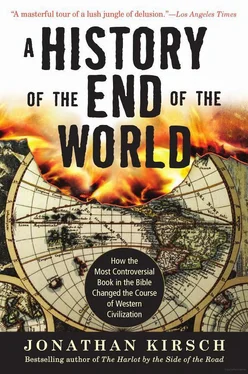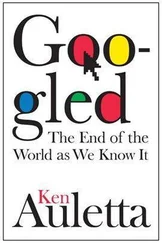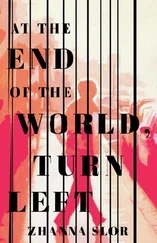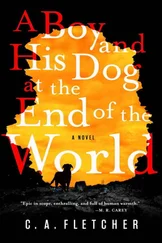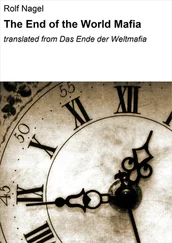Christian newspapers and magazines in America reported with interest and enthusiasm on the publication of The Jewish State, Herzl’s manifesto of political Zionism; the flare-up of anti-Semitic incidents in Russia and France; and the planting of the first Jewish colonies and kibbutzim on the soil of Palestine. Christian correspondents were present in Basel for the Zionist Congress in 1898, and they “often speculated about when the Jewish immigrants would start contemplating the construction of a new temple in Jerusalem”—a notion that would have shocked and scandalized any religious Jew and one that would never have occurred to the Jewish socialists and nationalists. 87
Some Christian Zionists, in fact, were already hard at work on the project of Jewish nation building long in advance of their Jewish counterparts. William Eugene Blackstone (1841–1935), a real-estate developer who turned to apocalyptic preaching, was so convinced that the Jews must return to Zion in order to bring the Second Coming that he set himself the task of making it a matter of American foreign policy. Blackstone secured the signatures of more than four hundred prominent American politicians and moguls on a petition that called on President Benjamin Harrison to champion the cause of a Jewish homeland. On March 5, 1891—five years before Herzl composed The Jewish State and six years before he convened the first Zionist Congress—Blackstone delivered his petition to the White House.
“Why not give Palestine back to them again?” implored Blackstone. “Let us now restore to them the land of which they were so cruelly despoiled by our Roman ancestors.” 88
Blackstone, in a sense, was more Zionist than the founder of modern Zionism. When Herzl openly entertained the pragmatic notion that a Jewish colony in British East Africa would suffice so long as Palestine remained out of reach, Blackstone boldly sent him a copy of the Hebrew Bible in which he had carefully marked—“in typical premillennialist fashion,” as Timothy Weber points out—the specific lines of biblical text that had convinced Darby and his followers that the restoration of the Jews to Palestine was both a divine promise and a divine mandate. For his efforts, Blackstone himself was acclaimed as a “Father of Zionism” at a Jewish conference in Philadelphia in 1918. 89
Still, Blackstone was more forthright than many other Christian supporters of Zionism in revealing the theological basis of his commitment to a Jewish homeland in Palestine. Like Joachim of Fiore and Martin Luther and Increase Mather, Darby taught—and Blackstone believed—that the Jews who returned to the land of Israel were destined to suffer and die during the reign of the Antichrist and to burn in hell for the rest of eternity. Only the Jews who converted to Christianity before it was too late, they insisted, would be restored to life in the New Jerusalem.
At a mass meeting of Zionists in Los Angeles in 1918, for example, Blackstone once again proclaimed himself to be “an ardent advocate of Zionism”—and yet he also revealed his belief that any Jew who embraces only Zionism is treading on a path that “leads through unequaled sorrows.” The better path, he insisted, “is to become a true Christian, accepting Jesus as Lord and Savior, which brings not only forgiveness and regeneration, but insures escape from the unequaled time of tribulation which is coming upon all the earth.” 90
“Oh, my Jewish friends, which of these paths shall be yours?” he witnessed to an audience that must have been amazed at his frank words. “Study this wonderful Word of God, and see how plainly God Himself has revealed Israel’s pathway unto the perfect day.” 91
Witnessing to the poor benighted souls who were not yet believers was regarded as a crucial mission in the culture war that was fought under the banner of fundamentalism. That’s what Dwight Moody meant when he quoted God’s instructions: “Moody, save all you can.” And that’s what motivated William Blackstone to join in founding one of several Christian missionary societies whose goal was the conversion of the Jewish immigrants who arrived in America in great numbers in the late nineteenth century. Surely, they were convinced, the end-times will be hastened by calling the Jewish people to Jesus Christ.
One such effort was the so-called Hope of Israel Mission, whose principal missionary, Arno C. Gabelein (1861–1945), started preaching on Saturdays in the Jewish neighborhood on the Lower East Side in New York City. Gabelein, a Methodist immigrant from Germany, studied both Yiddish and Hebrew so that he could answer the rabbis who came out to defend their faith. “In fact, he acquired such an expertise in the Talmud and other rabbinic literature and spoke such flawless Yiddish,” reports Timothy Weber, “that he often had a difficult time convincing many in his audiences that he was not a Jew trying to ‘pass’ as a gentile.” 92
But the Jews turned out to be a hard sell. When students from the Moody Bible Institute in Chicago ventured into a Jewish neighborhood to sermonize, for example, they succeeded only in attracting an angry mob that covered them with “an avalanche of watermelon rinds, banana peelings, overripe tomatoes, and other edible fruit.” 93Some missionaries adopted a kind of protective coloration, referring only to “the Messiah” and never to its Greek-derived equivalent, “Christ.” And one earnest missionary found out for himself why it was unwise to start canvassing a Jewish tenement from the ground up. By the time he reached the top floor, the apartment dwellers on the lower floors had read the literature he was handing out and greeted him on the way back down with curses and insults, hot soup, and rotten vegetables.
“Thus I learned that the next time I went into a tenement house,” the young man explained, “I must start on the top floor and work down.” 94
For some Christian fundamentalists, the resistance of the Jewish people to their efforts at conversion was seen as a sign of something wicked. The Protocols of the Elders of Zion, a crude anti-Semitic forgery that imagines a satanic Jewish conspiracy at work in the world, was read with credulity in certain Christian circles in the early years of the twentieth century, and Arno Gabelein openly praised Henry Ford for publishing the Protocols in his newspaper. Indeed, the notion of a secret cabal of Jewish malefactors was perfectly plausible to many readers of Revelation: “Premillennial eschatology is, after all, a conspiracy theory of cosmic proportions,” explains Weber. 95
To their credit, many other fundamentalists were moved to denounce those of their fellow Christians who engaged in acts or expressions of anti-Semitism. Thus, for example, James M. Gray, a minister with the Moody Bible Institute, condemned anti-Semitism as “one of the most despicable, brutal and dangerous forms of racial hatred and antagonism known to mankind.” At the same time, however, he frankly acknowledged that his religious convictions instructed him to regard the Jews as doomed: “It is true that Jehovah has awfully cursed Israel for her sins, and His curse rests upon her today,” Gray declared. “But it is one thing for God to curse her and another thing for us to do so.” 96
Then, too, some frustrated missionaries were encouraged by what they read in the book of Revelation to take a kind of smug satisfaction in the fate of those who resisted conversion, Jews and Christians alike. The author of Revelation, as we have seen, burns with resentment toward the “lukewarm” Christians who prefer the good life to what he sees as the righteous life, and he seems to take pleasure in imagining the revenge that God will take on anyone who does not share his faith. And the same gloating can be seen in latter-day readers of Revelation, too. Thus, for example, a revivalist preacher writing in 1918 insisted that God will literally chortle with delight over the suffering of everyone who has not been “raptured” to heaven before the end-times.
Читать дальше
